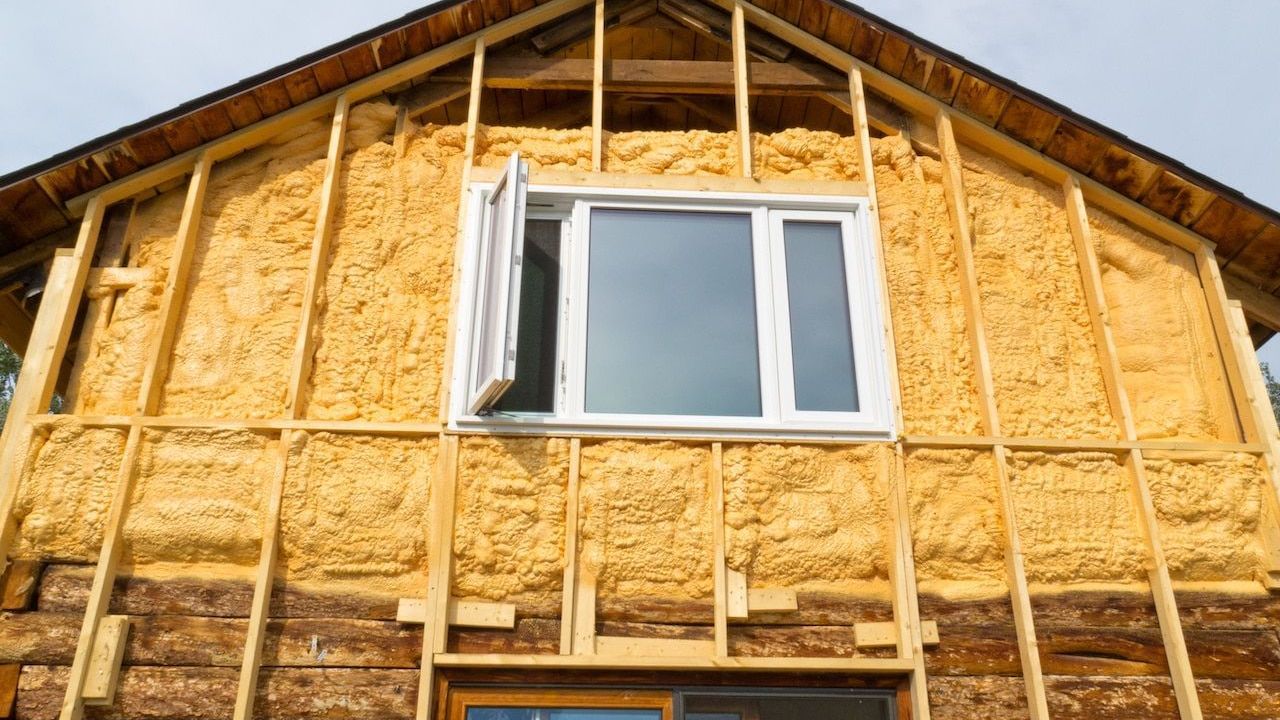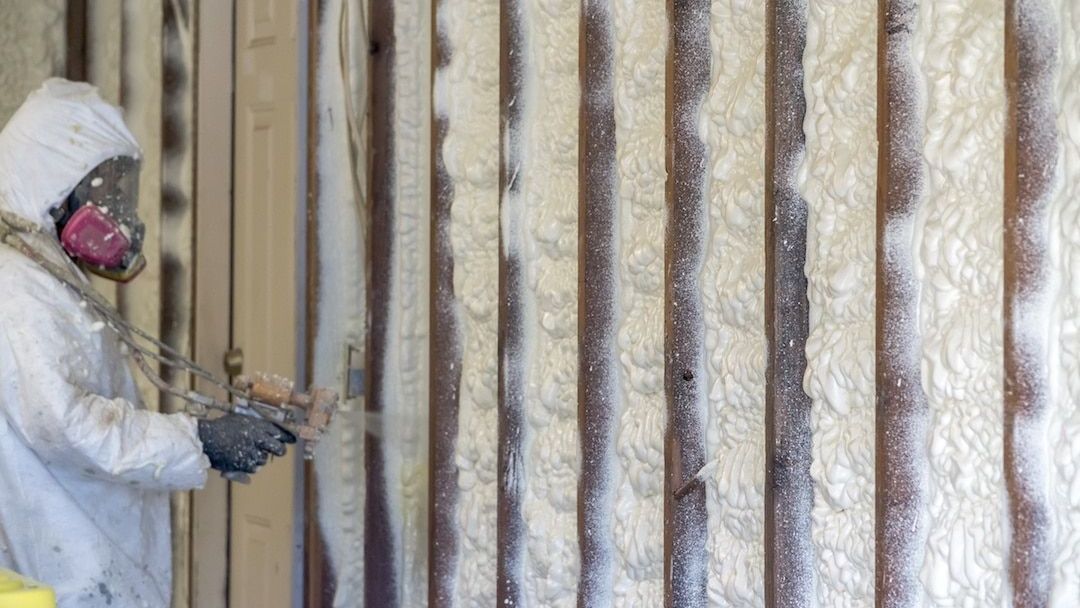Complete Home Spray Foam Insulation

Whole Home Spray Foam Insulation FAQ
How much does spray foam insulation cost for my whole home?
The cost of spray foam insulation for an entire home depends on several factors, including the size of the home, the type of spray foam used (open-cell vs. closed-cell), and the local labor rates. On average, spray foam insulation costs between $1.50 and $3.50 per square foot for open-cell and $1.50 to $7.00 per square foot for closed-cell foam. Additional factors like accessibility, regional pricing, and specific project requirements can influence the final cost. We'll be able to give a more detailed quote after examining your home.
How long does the spray foam insulation installation take for my home?
The installation time for spray foam insulation varies depending on the size of your home and the areas being insulated. For an average-sized home, the installation process typically takes 3 to 5 days. We will be able to provide a more specific timeline based on your home's layout and the scope of the project.
Is spray foam insulation safe for my family?
Yes, spray foam insulation is generally safe for your family when properly installed. However, the safety concerns mainly arise during the installation process due to potential off-gassing of chemicals while the foam cures. It's recommended to stay out of the home for 24 to 48 hours after installation to allow the foam to cure and for any fumes to dissipate. Once cured, spray foam insulation is considered inert and safe, with no ongoing off-gassing.
How long does it take spray foam insulation to cure?
Spray foam insulation generally takes between 24 to 48 hours to fully cure. The exact curing time depends on the type of foam used:
- Open-cell foam: Usually takes about 24 to 48 hours.
- Closed-cell foam: Typically cures within 24 hours. During this period, it’s important to allow for proper ventilation to dissipate any lingering fumes from the curing process. It’s also recommended to stay out of the home during this time to avoid exposure to any off-gassing chemicals.
Do I need permits for spray foam insulation?
In many cases, yes, you may need a permit to install spray foam insulation, especially if it’s part of a larger renovation or construction project. Whether a permit is required depends on local building codes, the scope of the work, and whether you're modifying existing structures. If you’re adding insulation to a new build or making significant changes to an unfinished space, it’s likely that a permit will be necessary. It’s best to check with your local building department to ensure compliance with regulations.
Benefits of Whole Home Spray Foam Insulation
Replacing your home's insulation with spray foam offers a multitude of benefits that can significantly improve your living environment and save you money in the long run. Here's a detailed explanation of the advantages:
Foam insulation provides a high R-value per inch compared to traditional insulation materials like fiberglass or cellulose. This means it offers better thermal resistance, keeping your home warmer in the winter and cooler in the summer.
Unlike other insulation types, spray foam expands upon application, filling gaps and cracks in walls, ceilings, and floors. This effectively seals your home against air infiltration, reducing drafts and energy loss.
Spray insulation creates a moisture-resistant barrier when applied, preventing water vapor from entering your home. This helps to reduce the risk of mold and mildew growth, as well as moisture-related damage to your home's structure.
By sealing out air pollutants and allergens, our insulation can help improve indoor air quality. This is especially beneficial for individuals with respiratory issues or allergies, as it reduces the infiltration of outdoor pollutants into the home.
Spray foam insulation has sound-dampening properties, reducing noise transmission between rooms and from outside sources. This creates a quieter and more comfortable indoor environment, enhancing overall livability.
While the upfront cost of spray insulation may be higher than traditional insulation materials, its superior performance and durability result in long-term savings. By reducing heating and cooling costs and minimizing the need for repairs due to moisture damage, spray foam insulation offers a high return on investment over time.
Upgrading to foam insulation can increase the resale value of your home. Potential buyers are often willing to pay more for a home with energy-efficient features and improved comfort.
Overall,
completely replacing your home's insulation with spray foam offers a comprehensive solution for energy efficiency, comfort, and durability. It's a smart investment that can enhance your living space and save you money for years to come.

Our Whole Home Insulation Process
- Assessment and Planning: Our process begins with a thorough assessment of the home's insulation needs. A professional insulation contractor will inspect the property to identify areas that require insulation and determine the best approach for installation.
- Preparation: Before installation begins, we prep the work area. This may involve clearing any obstacles, protecting surfaces, and ensuring proper ventilation.
- Safety Measures: Safety is paramount during spray foam insulation installation. Our contractors and staff will wear appropriate personal protective equipment (PPE) such as goggles, gloves, and respirators to safeguard against exposure to the insulation chemicals.
- Application: The spray foam insulation is applied using specialized equipment. Two main types of spray foam insulation are typically used: open-cell and closed-cell. Open-cell foam is lighter and more flexible, while closed-cell foam is denser and provides better insulation.
- Curing: After application, the spray foam insulation needs time to cure and expand fully. This process may take several hours, during which we keep the area clear and as undisturbed as possible.
- Trimming and Shaping: Once the foam has cured, we trim excess material and the surface is shaped as needed to achieve a smooth finish. This ensures that the insulation fits snugly and effectively seals the space.
- Quality Check: A final inspection is conducted to ensure that the insulation has been installed correctly and meets quality standards. Any areas requiring additional attention or touch-ups are addressed at this stage.
- Cleanup: After installation is complete, the work area is cleaned up, and any debris or waste materials are removed from the premises.
- Post-Installation Inspection: After the installation process is finished, homeowners may opt for a post-installation inspection to verify that the insulation has been installed according to specifications and that it meets their satisfaction.
Revolutionize your living experience with our top-tier spray foam insulation service, designed to elevate your home's energy efficiency and comfort levels to new heights. Our dedicated team of professionals brings years of expertise to every project, ensuring precise installation of high-quality spray foam insulation throughout your entire home. Bid farewell to pesky drafts, soaring energy bills, and uneven indoor temperatures as our meticulously applied insulation seals every nook and cranny, creating a cozy and consistent climate year-round. Not only does our insulation solution enhance your comfort, but it also promotes environmental sustainability by reducing energy waste and lowering your carbon footprint. Rest easy knowing that our comprehensive insulation package is tailored to suit your home's specific needs, providing lasting performance and peace of mind for you and your family. Experience the transformative power of superior insulation with our trusted service. Interested in knowing more? Check out our Blog!





